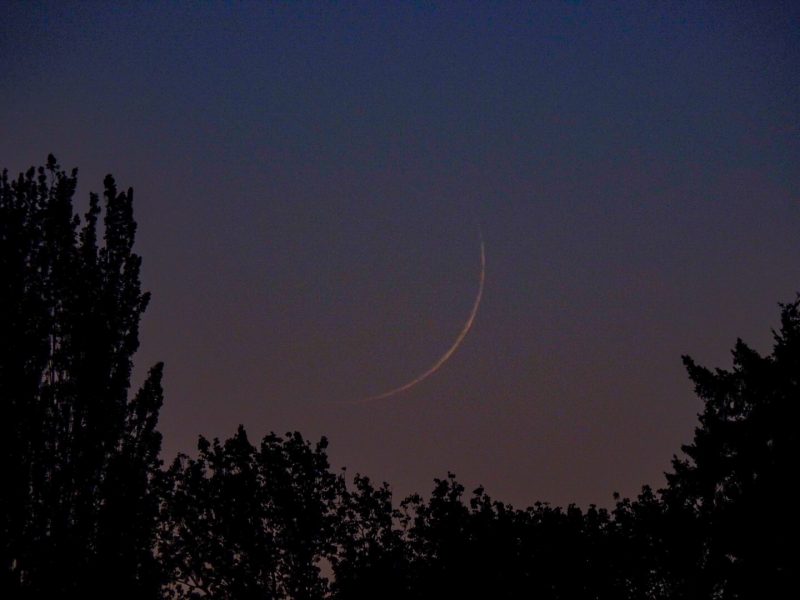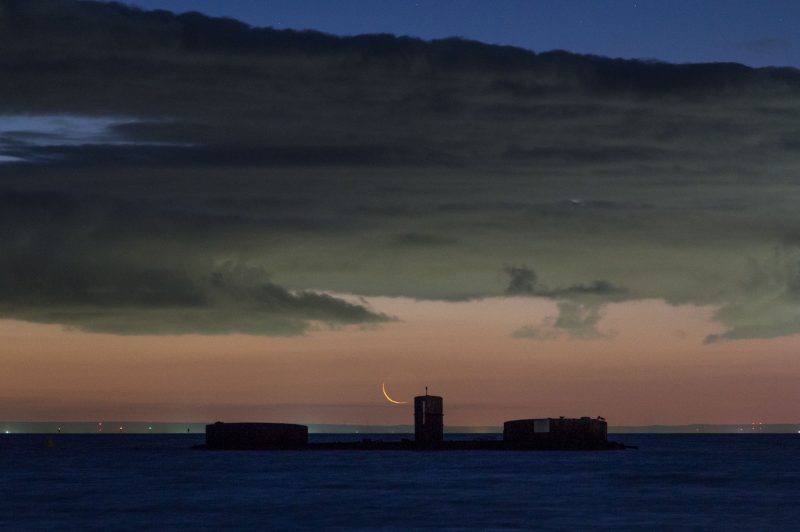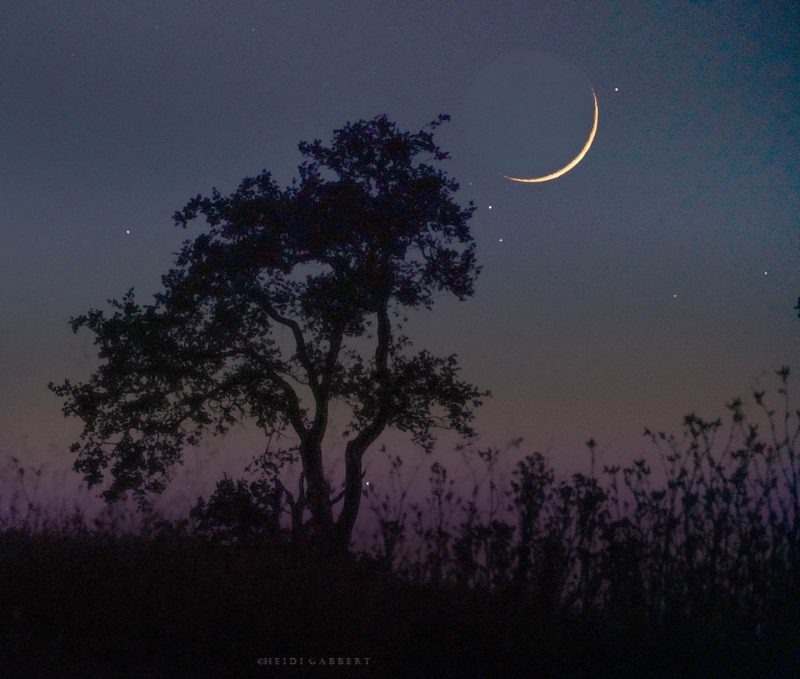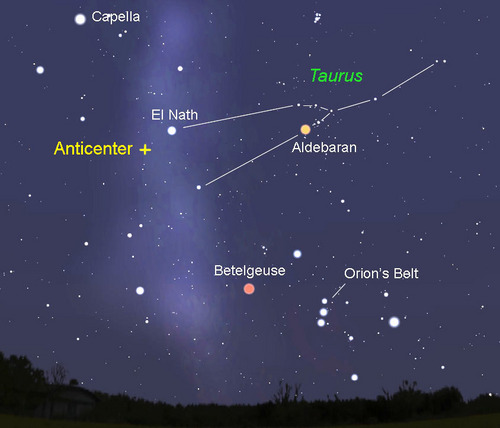On May 6, 7 and 8, 2019, find an unobstructed horizon in the direction of sunset, and watch for the young moon and the planet Mars to pop out in your western sky as evening twilight gives way to darkness. Which one is Mars? It’s not very bright or prominent now, but the moon can help you find it. Just be sure to look for the moon soon after sunset, when the lunar crescent will be quite thin and might set before nightfall (depending on where you live worldwide).
Click here to find out when the moon will set in your sky, remembering to check the moonrise/moonset box.


When you see the red planet Mars tonight, it’ll be hard to believe that – in July and August of 2018 – it was far brighter than any star (except our sun, of course). Back then, Mars was the fourth-brightest celestial body to light up the heavens, after the sun, moon and Venus. In late July 2018, Mars was six times closer to Earth and shone about 60 times brighter in our sky than it does at present. Earth was passing (more or less) between Mars and the sun in late July 2018. Now Earth has pulled far ahead of Mars in orbit, so that the red planet has dimmed in our sky and will fade out of view, into the sunset glare, in another month or two. Mars won’t be super brilliant in our sky again until around October 2020, when, once more, we’ll be passing between Mars and the sun.
Read more: Why is Mars sometimes bright and sometimes faint?
The moon is waxing now. That means that, day by day, it’ll be higher up at sunset, a wider lunar crescent that’ll stay out longer after dark. So, if you miss the thin lunar crescent after sunset May 6, try again on May 7 or 8, as the crescent pairs up more closely with Mars. While your’re at it, see if you can catch the earthshine lighting up the nighttime side of the moon, with either the unaided eye or binoculars.

Don’t mistake the star Elnath for Mars. Mars and Elnath reside quite close together on the sky’s dome right now, and shine at nearly the same brightness. You can distinguish ruddy Mars from blue-white Elnath by color. If you have difficulty seeing color with the eye alone, try binoculars. Elnath, by the way, is the second-brightest star in the constellation Taurus the Bull.
Elnath is also the closest bright star to the galactic anticenter: the point in space directly opposite of our Milky Way’s center. The galactic anticenter lies about three degrees to the east of the star Elnath. Three degrees is about the width of your thumb at an arm’s length away. We’re not talking about a place in space here, just a direction in the sky. Elnath is about 130 light-years away. The outskirts of our galaxy’s disk extend many thousands of light-years.
Elnath stands a bit north of the ecliptic – the annual pathway of the sun in front of the background stars. Because the moon’s monthly path is always near the ecliptic, the moon swings close to Elnath every month. Generally, the moon swings to the south of Elnath. On occasion, the moon swings far enough north so that it occults – covers over – Elnath. This won’t happen again until September 7, 2023, the occultation marking the first of a series of monthly occultations that will last until April 11, 2027.

Bottom line: On May 6, 7 and 8, 2019, watch for the young crescent moon to pass by the planet Mars. Just don’t mistake the star Elnath for Mars. Elnath is the 2nd-brightest star in Taurus the Bull.











